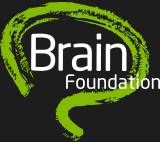Description
Each year in Australia, one in every 1,000 children is born with hydrocephalus. Many more children and adults acquire hydrocephalus as a result of accidents, tumours, bleeding or infection.
Left untreated, hydrocephalus can cause severe disability, even death.
Hydrocephalus occurs when excessive cerebrospinal fluid accumulates in the brain. The name originated from the Greek words ‘hydro’ for water and ‘cephalus’ for head.
Cerebrospinal fluid (CSF) is made up of water, minerals, nutrients and sugar. It is continually produced by the brain at the rate of 500 mL per day. The fluid flows through the four cavities (ventricles) in the brain, through the small openings (cisterns) at the base of the brain, bathes the surface of the brain and spinal cord, and then is absorbed into the bloodstream. CSF aids in delivering nutrients to the brain and removing waste, keeping brain tissue buoyant and compensating for changes in blood volume in the brain and spinal cord.
When hydrocephalus occurs it is a result of either a blockage to the flow of the CSF, or the body’s inability to absorb it. When this happens, the CSF builds up within the ventricles and in CSF compartments over the surface of the brain (subarachnoid space). The CSF build-up causes the ventricles and CSF compartments to swell or enlarge, which results in pressure on the brain or stretching of the nerve fibres connecting different parts of the brain. Without treatment, hydrocephalus results in compromised mental functioning, visual disturbances, walking difficulty, incontinence, and reduced conscious state.
Hydrocephalus may result from genetic inheritance, developmental disorders – such as spina bifida, complications from premature birth, disease – such as meningitis, tumours, head injury or subarachnoid haemorrhage – blocking the exit from the ventricles.
Hydrocephalus may be caused three ways:
1. An increase in the production of cerebrospinal fluid – vary rare.
2. An obstruction to circulation within either the ventricles or subarachnoid space.
3. A failure of absorption.
Hydrocephalus can be either congenital or acquired. Congenital hydrocephalus is where there is a disturbance in the development of the pathways of CSF. Acquired is where a secondary event such as a tumour or infection, blocks circulation channels.
Symptoms of hydrocephalus vary with age. The main symptoms are headache, nausea and vomiting.
Additional symptoms for babies 0-18mths may include: an increase in the head size or rate of growth (more than normal growth), soft spot on the head, vomiting, poor feeding, drowsiness, eyes turning downwards or inwards, seizures or fits.
Additional symptoms for older children or adults may include: headache, blurred or double vision, poor concentration, loss of muscle coordination, confusion, incontinence, seizures or fits.
The increased CSF pressure on optic nerves can result in visual disturbances. Eye movement disturbances can include:
- Strabismus – where the eyes are not straight. If a patient with a shunt suddenly develops a squint, this may be a result of shunt complications.
- Gaze Palsies – a common characteristic of hydrocephalus where the patient is unable to move their eyes together in an upward direction.
- Nystagmus – rapid abnormal movement in the eyes may be due to a number of causes.
If you or your child suffers these symptoms, please visit your GP immediately.
In order to diagnose hydrocephalus, three types of tests can be conducted:
- Tests to show the size or the ventricles and the subarachnoid space. These tests include an MRI (Magnetic Resonance Imaging) Scan, CT (Computerised Tomography) Scan, and Ultrasound scan (in babies). These tests may also be helpful in identifying the cause of an obstruction to CSF flow (eg: tumour).
- Tests to show CSF circulation. These tests include a CSF Flow Study, Shunt Patency Study and a Computerised Radionuclide Shunt Study.
- Tests of CSF pressure or brain compliance. These tests include lumbar puncture, CSF Infusion Study and ICP monitoring.
The doctor will select the appropriate tests based on the patient’s age, symptoms and medical background.
Treatment
Treatment for hydrocephalus aims firstly to ease the CSF build-up, and then to ensure that the same situation does not recur. To do this usually requires surgery to insert a ‘Shunt System’, which eases the build-up of CSF. There are two types of shunt systems that are may be implemented:
- A Direct shunt bypasses a blockage and enables CSF to continue to flow within existing channels. A direct shunt is less common. A direct shunt may involve making a hole in the third ventricle to allow CSF to flow, or, using a catheter to divert CSF from the ventricles to the subarachnoid space.
- An Indirect shunt diverts CSF out of the cranial or spinal cavity and drains back into another part of the body. An indirect shunt is used in most cases. There are a number of styles of indirect shunts, which divert CSF flow from the brain or spinal cord to the abdomen, or a chamber of the heart or lung cavity to drain and be absorbed into the bloodstream. An indirect shunt usually consists of a ventricular or lumbar catheter (a fine tube which is inserted into the ventricle), a valve to release the fluid and, a distal catheter (a fine tube which is tunnelled under the skin to another part of the body).
Prognosis
The prognosis for a patient with Hydrocephalus is dependent on individual symptoms, timeliness of diagnosis and how the patient reacts to treatment. Most hydrocephalus patients lead long, problem-free lives. However, left untreated, progressive hydrocephalus is generally fatal.
If a patient’s hydrocephalus is treated with the implementation of a shunt system, their prognosis depends on how their body accepts the system. The main complications experienced with shunt systems are blockage, disconnection and infection.
- Blockage – tissue, or blood, protein, cells or debris may block any part of the shunt system. If the valve part of the shunt malfunctions, this may also result in blockage. Most shunts become blocked over 5-10 years. Treatment of a blocked shunt system may require replacement of the whole shunt system.
- Disconnection – may result at a join within the shunt. May also result if the shunt migrates (moves) within the body.
- Infection – usually a result of bacteria, which may be introduced in surgery, can also result from another source of infection within the body. It may be necessary to replace the infected shunt.
Less common complications from shunt procedures include: haemorrhage – during surgery, ventricular catheters that break off and are difficult to retrieve which may lead to infection, and seizures, fits or even epilepsy.
It is important to note that most hydrocephalus sufferers lead trouble-free lives. Up to 10% of patients even become independent of their shunt.
Further information and support
Click here for the latest Australian research papers on Hydrocephalus.
The Madeline Foundation
C/- PO Box 1010, Neutral Bay NSW 2089
Tel (02) 9926 6408
Neuroliaison Clinical Nurse Consultant
Children’s Hospital, Westmead
Tel (02) 9845 2635 (Mon-Wed)
The Hydrocephalus Support Association
85 Gloucester Road, Hurstville NSW 2220
Tel (02) 9586 1057
Email hydroce@bigpond.net.au
www.hydrocephalus.org.au
Reviewed by Associate Professor Marcus Stoodley, Prince of Wales Clinical School, University of New South Wales, Sydney, Australia
DISCLAIMER: The information provided is designed to support, not replace, the relationship that exists between a patient / site visitor and his / her existing health care professionals.


 The Brain Foundation is the largest, independent funder of brain and spinal injury research in Australia. We believe research is the pathway to recovery.
The Brain Foundation is the largest, independent funder of brain and spinal injury research in Australia. We believe research is the pathway to recovery.